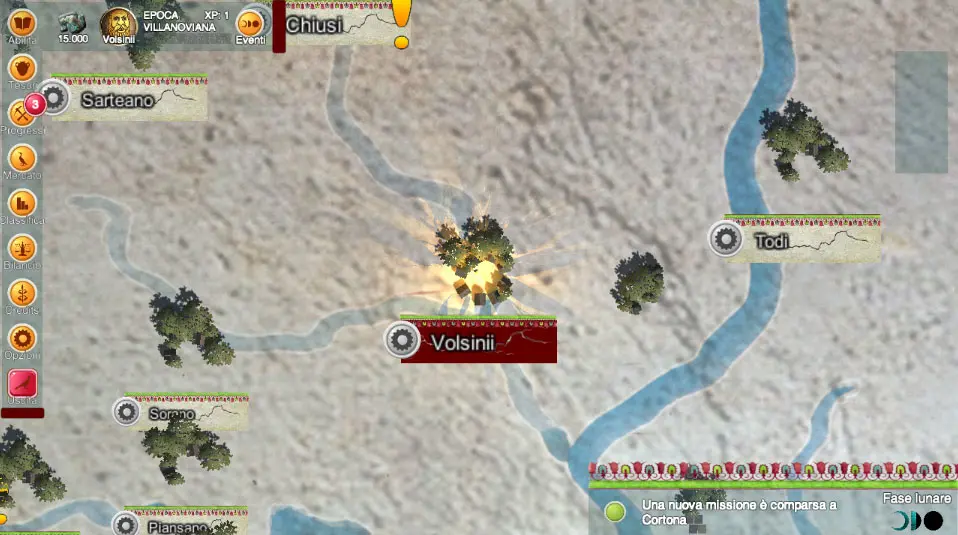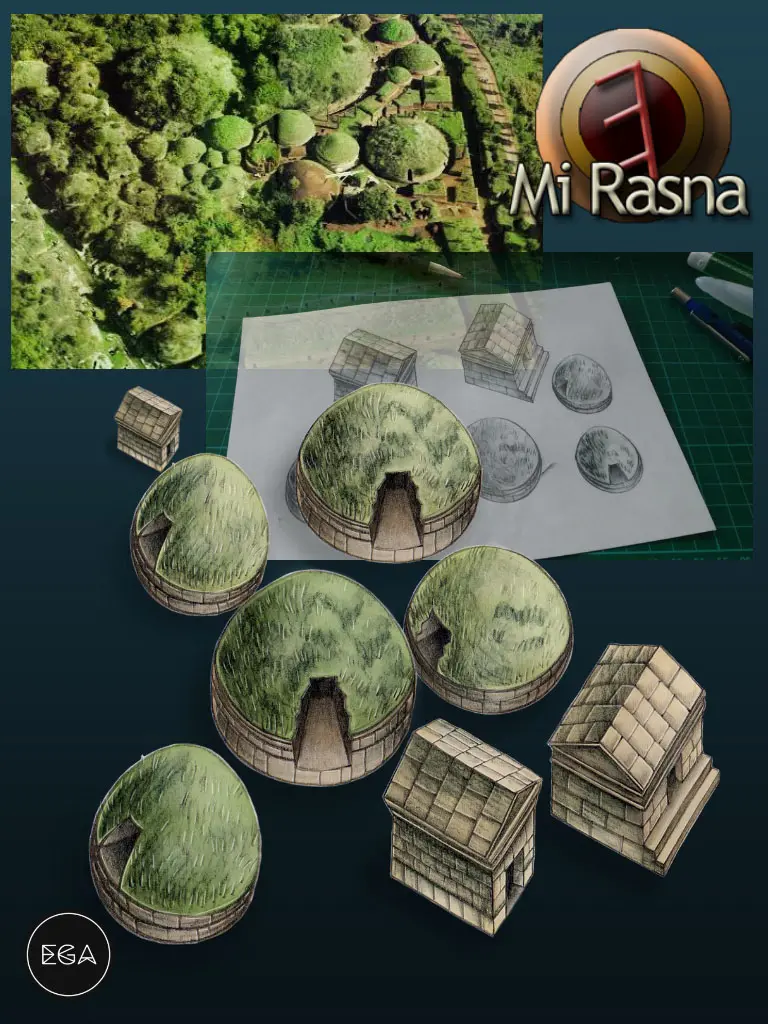

The large number of places involved made it possible to develop the videogame with the aim of supporting and promoting the territory and its patrimony. The setting is actually based on research into Etruscan history and the artefacts that have been recovered. The geographical area of interest features three regions: Tuscany, Umbria, Lazio. Principal locations include Arezzo, Bolsena, Cerveteri, Chiusi, Cortona, Massa Marittima, Orvieto, Pitigliano, Perugia, Populonia, Saturnia, Tarquinia, Todi, Veio, Vetulonia and Volterra. The numerous partner museums include Museo Nazionale Etrusco di Villa Giulia di Roma, Museo Archeologico Nazionale di Firenze, MAAM di Grosseto, Museo Archeologico di Populonia, Museo Civico Faina di Orvieto, and Museo Archeologico Nazionale di Orvieto.
The September 2019 update added border cities to the map. For Campania: Capua, Pontecagnano, Fratte. For Emilia-Romagna: Felsina (the current Bologna), Marzabotto, Spina. For Lombardy: Castellazzo della Garolda, Forcello di Bagnolo, Mantova. For Veneto: Adria.
The large number of places involved made it possible to develop the videogame with the aim of supporting and promoting the territory and its patrimony. The setting is actually based on research into Etruscan history and the artefacts that have been recovered. The geographical area of interest features three regions: Tuscany, Umbria, Lazio. Principal locations include Arezzo, Bolsena, Cerveteri, Chiusi, Cortona, Massa Marittima, Orvieto, Pitigliano, Perugia, Populonia, Saturnia, Tarquinia, Todi, Veio, Vetulonia and Volterra. The numerous partner museums include Museo Nazionale Etrusco di Villa Giulia di Roma, Museo Archeologico Nazionale di Firenze, MAAM di Grosseto, Museo Archeologico di Populonia, Museo Civico Faina di Orvieto, and Museo Archeologico Nazionale di Orvieto.
The September 2019 update added border cities to the map. For Campania: Capua, Pontecagnano, Fratte. For Emilia-Romagna: Felsina (the current Bologna), Marzabotto, Spina. For Lombardy: Castellazzo della Garolda, Forcello di Bagnolo, Mantova. For Veneto: Adria.

In Mi Rasna the player administers one of twelve historical Etruscan City-States. The player takes on the identity of the lucumone, the local magistrate, and controls all the aspects of the territory (agriculture, animal breeding, building, artisanship etc.) following the rules of the strategy/managerial genre and consolidated mechanisms of accumulating resources and constructing buildings. The aim of the game is to increase the well-being of fellow Etruscans, residents of the other eleven cities, by creating networks of exchange and commerce. The titles includes minigames based on historical issues and real artefacts that are key in accumulating the silver coins necessary to build the player’s city. An interesting option is the use of augmented reality and geolocalization, whenever the player is inside an institution that is a project partner. This relationship between municipalities, museums and Italian archaeological sites is the driving ambition of the EGA team. Results at 31 December 2018, seven months after its launch, record 100,000 quizzes taken and 50,000 artefacts visualized. Almost 2,500 players were geolocated within the partner museums, unlocking extra points.